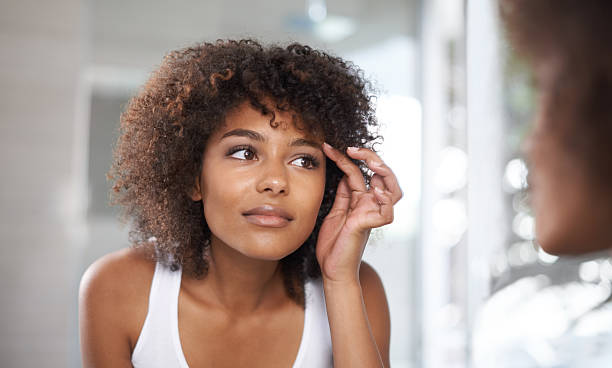What is eyebrow twitching?
Eyebrow twitching is a movement disorder of involuntary, fine, continuous, undulating, non-synchronous contractions of eyebrow muscles (corrugator supercilii or depressor supercilii), which is seen as rippling of the overlying skin. It usually occurs together with the eyelid twitches (blepharospasm), as eyelid twitches may also pull the skin around the eyebrow.
Electrophysiologically, eyebrow twitching is defined as the spontaneous asynchronous discharge of adjacent motor units in doublets or triplets at a rate of 30–70 Hertz (Hz). These involuntary discharges may increase with voluntary activity.
How dangerous is eyebrow twitching?
Eyebrow twitching is assumed benign, painless, and self-limiting. It usually lasts for just a few seconds, but in some rare cases, it can continue for several hours or even days and will usually go away on their own. In general, it is not associated with any disease, and medical intervention is usually unnecessary.
Eyebrow twitching is most commonly precipitated by electrolyte imbalance, fatigue, stress, dehydration, excessive caffeine or alcohol intake, and some medications. On very rare occasions, it may be a sign of a serious underlying disorder, such as Bell’s palsy, dystonia, multiple sclerosis, or Tourette syndrome.
What are corrugator supercilii and depressor supercilii muscles? How do they work?
The corrugator supercilii is a tiny and narrow pyramidal muscle close to the eye. It is placed at the eyebrow’s medial end, beneath the frontalis and just above orbicularis oculi muscle.
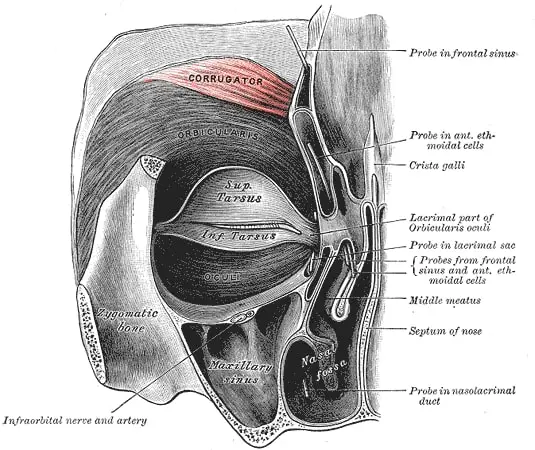
It is known as the “frowning” muscle and may be regarded as the main muscle in the expression of suffering. This muscle also contracts to prevent high sun glare. In patients with migraine, a paralysis of this muscle with botulinum toxin can be used as a preventive treatment option for some types of migraine attacks.
The depressor supercilii is a muscle of the eyebrow that affects the movement of the eyebrow and the skin between the eyebrows and above the nose.
Improper activation of these muscles may lead to eyebrow twitching.
Causes of eyebrow twitching
Different factors may provoke eyebrow twitching. Most of these causes are benign; however, in some sporadic cases, twitching muscles of the eyes and eyebrows may be a sign of a more serious illness.
Benign causes of eyebrow twitching
1. Excess caffeine intake
As an ingredient of coffee, chocolate, tea, and other dietary products, caffeine is considered as the world’s most widely consumed drug. Caffeine has a well-established stimulant activity, and if taken in large doses, it can induce muscle contraction, including muscles of the eyebrow.
Although the exact mechanism of caffeine-provoked eyebrow twitching is not known, it has been suggested that caffeine may act in synergy with other metabolites, electrolytes (e.g., sodium, potassium, magnesium, and calcium), neuronal excitation and inhibition patterns and may lower an overall threshold for inducing muscle contraction of the eyes.
A daily dose of 250mg-400mg of caffeine, which is about two to four cups, is considered as a high dosage and over 500-600mg (more than 5 cups) as excessive or possibly harmful and may be a cause of eyebrow twitching.
2. Magnesium deficiency
Magnesium is the fourth most abundant mineral in the human body and a normal component of a typical diet. Magnesium is an essential mineral for muscle contractions.
A lack of dietary magnesium intake may lead to hypomagnesemia, a condition characterized by low magnesium levels in the body, subsequently causing muscle spasms, including also the muscles of the eyes and eyebrows.
Foods, which are generally high in magnesium, include dark green leafy vegetables, legumes, nuts, seeds, and unrefined grains. Magnesium supplements for oral use are widely available without a prescription, and many of these are actively marketed for muscle spasms prophylaxis.
Besides, magnesium deficiency in the body may also occur with underlying conditions. These include excess vomiting or diarrhea, heavy sweating, ulcerative colitis, Crohn’s disease, diabetes, or hyperthyroidism. High intake of alcohol and coffee may also lead to hypomagnesemia.
3. Calcium and vitamin D deficiency
Calcium is another mineral that is also very important for proper muscle function. Decreased serum calcium levels may harm metabolic and neuromuscular performance. This may also be a possible cause of muscle twitching.
Milk and dairy products are the outstanding sources of calcium in the diet. Other sources of calcium include meat, poultry, fish, egg, bread, cereals, fruits, and vegetables. The Recommended Daily Allowance (RDA) of calcium for an adult is 0.8 grams per day.
Vitamin D is necessary for adequate neuromuscular signaling and proper muscle function. Nerves use vitamin D to transfer signals from the brain to the muscles. Vitamin D deficiency may lead to muscle weakness and may provoke twitching.
Furthermore, vitamin D stimulates calcium absorption in the duodenum and its reabsorption from the distal tubules of the kidney via intracellular vitamin D receptors. Thus, the deficiency of vitamin D may also be a possible reason for calcium deficiency, both of which are very important for healthy muscle function.
Poor diet and lack of exposure to sunshine are the main reasons for vitamin D deficiency. Vitamin D is synthesized in the skin during exposure to sunlight, more precisely to ultraviolet B radiation of wavelength 290–320 nm. The main dietary sources are fish and fortified food. Vegetables and grains are poor sources of Vitamin D. Vitamin D is also available in the form of supplements.
4. Alcohol and tobacco overuse
Alcohol abuse, either by acute intoxication or by chronic excessive consumption, leads to pathological changes in many organs and tissues of the human body, including skeletal muscle of the eyes.
Studies have shown that alcohol may impair protein synthesis necessary for appropriate muscle contractions. On the other hand, excess acute alcohol intake may reduce the absorption of vitamins and minerals such as vitamin B1, magnesium, and folate that are also essential for muscle function.
A well-known effect of alcohol intoxication is dehydration because alcohol also works as a diuretic. Dehydration provokes hangover symptoms such as headache and fatigue. Eyebrow twitching appeared to be a common manifestation in these situations.
Cigarette smoking has harmful effects on the muscles too. Nicotine, tar, and various additives in cigarettes disrupts adequate oxygen supply to the muscles and may subsequently lead to inappropriate muscles contractions. Moreover, chronic nicotine intake may inhibit intestinal calcium and vitamin D absorption.
5. Anxiety and too much stress
Eyebrow twitching may also have a psychogenic background. Daily stress and anxiety produce physical reactions and may cause a sudden eyebrow twitching, which is most often short-term and disappears after you get relaxed.
During stress and anxiety, the nervous system activates blood vessels, which contracts the eyebrow muscles resulting in tightening and shortening of these muscles and causing muscle stiffness.
6. Fatigue and sleep deprivation
Muscle fatigue triggers twitching and cramping in overused muscles. Fatigue may lead to electrolyte loss within muscle cells, which in turn trigger twitching. On the other hand, not enough sleep inhibits overused muscle reparation. During sleep, our body repairs and relaxes the overused muscles.
Our muscles will be fully repaired only if we go through all stages of sleep. Lack of sleep may also negatively affect neurotransmitters function. Excess neurotransmitters may build up in our brain, potentially leading to eyebrow muscle twitching.
7. Dehydration
Water carries electrolytes and helps our muscles to contract and relax efficiently. It keeps muscle cells hydrated and less irritable. That’s why dehydration is also a possible cause of muscle twitching. Drink plenty of water every day (8 cups a day).
8. Medications
Medications used for the treatment of Parkinson’s disease may cause eye muscle twitches as a side effect.
In rare cases, atypical antipsychotic medications, including risperidone, aripiprazole, and olanzapine, may be associated with motor tics, including eyebrow twitching in adults with psychotic disorders.
There are also reports that some anti-seizure medications may have similar side effects.
Serious causes of eyebrow twitching
1. Bell’s palsy
Bell’s palsy is characterized by an acute, unilateral, complete or partial paralysis of the face. The face muscle weakness may be associated with mild pain, numbness, altered taste, and increased sensitivity to sound.
In some cases, this condition may be caused by reactivation of the herpes virus. One of the signs of Bell’s palsy is also a persistent eyebrow twitching.
2. Tourette’s syndrome
Tourette’s syndrome is a disorder characterized by simple and complex motor tics. It mainly occurs in boys and shows a genetic predisposition with differing penetrance. Motor tics often include eye twitching.
3. Parkinson’s disease
Parkinson’s disease is a progressive neurodegenerative condition characterized by motor features such as tremor, bradykinesia, rigidity, and postural instability. In rare cases, patients with Parkinson’s disease may be present with ocular tremor.
4. Dystonia
Dystonia is characterized by uncontrollable muscle spasms leading to slow, repetitive movements. In some cases, the disease may also affect the eyes.
5. Multiple sclerosis
Multiple sclerosis is an inflammatory disease characterized by brain lesions that can lead to severe physical or cognitive disability as well as neurological defects. Muscle twitching that lasts for several days may be a sign of this disease.
6. Isaac’s syndrome
Isaacs’s syndrome is an acquired autoimmune disorder characterized by continuous muscle twitching and myokymia, muscle hypertrophy, weight loss, and hyperhidrosis.
It is commonly referred to as acquired neuromyotonia to emphasize the neurogenic basis of continuous muscle activity. Muscle twitches are a common manifestation of this syndrome.
How to stop eyebrow twitching?
Even in cases when eyebrow twitching is persistent and very frequent, it is easy to treat and prevent it at home with adequate lifestyle changes to keep nerves and muscles healthy and make them function well.
Medical interventions are usually unnecessary. Following lifestyle changes are recommended:
Eat a more healthy and balanced diet rich in magnesium, calcium, vitamin D and omega-3 essential fatty acids
Diet rich in magnesium, calcium, Vitamin D, B vitamins, and omega-3 essential fatty acids (milk, dairy products, meat, poultry, fish, egg, bread, cereals, fruits, and vegetables) is recommended for those who have persistent muscle twitches.
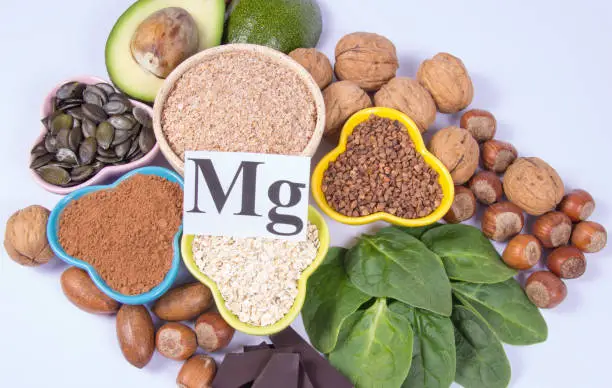
Notably, our body needs 200 IU of vitamin D daily up to age 50 and then 400 IU to 600 IU as you get older. Good dietary sources of vitamin D include salmon and mackerel and cod liver oil.
Fortified juices and dairy products are also recommended. Women need 310-320 mg of magnesium per day, while men require 410-420 mg. Milk, dairy products, dark leafy greens, legumes, nuts, seeds, and whole grains, are rich in magnesium.
Adults need 1,000 mg daily of calcium, which is available in leafy green vegetables, dairy foods, and nuts.
Although there is little data to show the link between omega-3 essential fatty acids and eye muscles twitching, these essential fats are essential for general optimal brain and eye functions, which may help reduce involuntary spasms.
Food sources rich in omega-3 essential fatty acids are fish such as wild salmon, sardines and mackerel, fish oil, but also chia seeds, flaxseed, hemp hearts, walnuts, and algae, such as chlorella or spirulina.
Take dietary supplements to address deficiencies
Supplements with calcium, magnesium, vitamin B12, and vitamin D are recommended for those who have muscle twitches.
Avoid caffeine, alcohol, and cigarettes
As mentioned, excess caffeine, alcohol, and nicotine intake may provoke eyebrow twitching. Do not take more than 2 cups of coffee per day, avoid alcohol, and stop or reduce smoking.
Stay hydrated
Water makes up about 60% of our body weight. Water helps you to gets rid of waste and toxic materials through perspiration, urination, and bowel movements, keeps muscle cells hydrated and less irritable, and protects sensitive tissues.
Drink plenty of water. About 15.5 cups (3.7 liters) of water are recommended for men and about 11.5 cups (2.7 liters) for women.
Get plenty of sleep
Fatigue is considered one of the main causes of eye twitching. Many persons who do not sleep well have reported this problem. Go to bed early and try to sleep at least 8-9 hours without disturbance.
Reduce stress with relaxation techniques
Try to avoid everyday stress as much as you can. Start with relaxation techniques and exercise such as yoga, mindfulness, meditation, tai-chi, or massage.
Studies have shown that these techniques are effective for reducing the symptoms of stress-related disorders, suggesting that it may also be effective for regulating nerve impulses that cause involuntary muscle spasms. They may help you to alleviate stress and could help you to reduce the cases of the eyelids or eyebrows twitching.
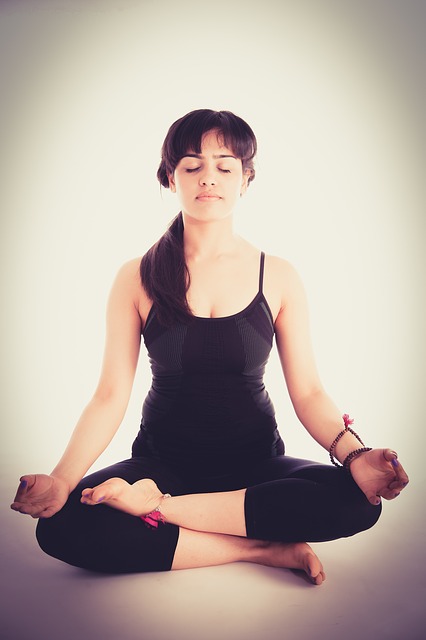
Breathing exercise
Appropriate breathing exercises may help you to reduce stress and make your muscles relaxed. Just 10 minutes of simple deep-breathing techniques may help your eyebrow twitching.
Breathe in and breathe out, but take more time to breathe out, and do it mindfully and gently. You should do it as soon as you wake up or before sleep.
Hard blinking technique
This technique is suitable for stretching the eye and facial muscles. By doing this, you will also increase the eye circulation. Shut your eyes as hard as you can and then open the eyes up wide. Continue doing this until your eyes start to water.
Home remedies for eyebrow twitching
Although there are no specific medical interventions, some of the following home remedies are considered effective and safe for eyebrow twitching relief.
Warm compress dipped in rose water
A warm compress may restore and enhance the function of the overused muscles of the eyes. For example, you can use a handkerchief or cotton dipped in warm rose water, which acts as a cleanser and lotion and keeps around eyes until the warmness is gone. Rosewater also relaxes eye muscles. Do this several times a day.
Eucalyptus leaves in a boiling water
Similarly to warm compress, steam is also a practical option for twitching relief as it may relax overused muscles of the eyes. Add a few leaves of Eucalyptus in the boiling water, cover your head with a towel, and take steam for 10 to 15 minutes.
Slices of cucumber or potato
Cover the eyes with slices of cucumber or potato. This may reduce eyes’ stress and may stop twitching.
Eye massage
Regular massage of the eyebrow and eyelid area helps in better blood circulation and relaxes the muscles of the eyes. Gently massage the area around the eyes for about 30 seconds. Repeat this several times a day.
When should you visit a doctor?
To rule out any potentially severe causes of eyebrow twitching, it is essential to talk to your doctor if you experience any of the following symptoms:
- Twitching that lasts for a few weeks.
- Eyelids or any other facial muscles droop.
- Swollen or red skin around the eye, or redness of the eye.
- Skin numbness around the eyes.
- Twitching in other parts of your face or body.
- Eyelid closes when the twitching occurs.
If there is no evidence of a serious underlying cause, and you still experience chronic eyebrow twitching even though you’ve changed your lifestyle and tried home remedies, your doctor may prescribe you several treatment options.
Botulinum toxin is the most commonly recommended treatment in these situations. Low doses of muscle relaxant medications such as clonazepam or lorazepam may also be prescribed for a short-term period.
Botulinum toxin (Botox) injections for eyebrow twitching
In some rare cases, your doctor might prescribe you Botulinum toxin A (Botox) injections as a treatment option for persistent and unbearable eyebrow twitching. Botulinum toxin A is a neurotoxin produced by bacterium Clostridium botulinum.
When injected locally in the eyebrow, it causes muscular paralysis by interfering with the release of the neurotransmitter acetylcholine at neuromuscular junctions. It also increases tear secretion and decreases dry eye symptoms, which have also been reported in many people with eyebrow twitching.
Many studies confirm that Botox local injections are effective and well-tolerated against the disabling effects of muscle spasticity and rigidity. Botox starts to work within 24-72 hours after administration and reaches maximum effect within 7-14 days. Its effects last for up to 3-4 months.
Acupuncture for eyebrow twitching
Acupuncture is effective for treating muscle pain and spasms, including eyebrow twitches. One study showed that acupuncture is more effective than the therapy with anticonvulsant drugs (benzhexol hydrochloride, baclofen, and clonazepam) for the treatment of abnormal contraction or twitch of one or more of the eyelids. Acupuncture had over a 93% success rate compared to medications that had a 75% success rate.
Acupuncturists use a variety of acupoints to treat eye disorders. For example, TB23 or Sizhukong point, which is translated as a silken bamboo hollow, is situated in the depression at the lateral eyebrow end. Many acupuncturists use this point for the treatment of headaches, eye disorders, and facial paralysis.
UB2 or Zanzhu point, translated as gathered bamboo, is placed in the supraorbital notch at the medial extremity of the eyebrow. A matched pair of TB23 and UB2 points effectively needle both ends of the eyebrow. Similarly, to TB23, UB2 is also indicated for the treatment of eye disorders and headaches.
LI4 point is also indicated for eye disorders but is also an entry and source point. This point is commonly used for the treatment of facial edema, facial paralysis, and febrile conditions.
Acupressure for eyebrow twitching
In many people with periodic eye and eyebrow twitching, acupressure might help to stop the annoying twitch.
In this case, the best acupressure point to start with is San Jiao 5 (SJ 5) located at the outside of the arm, just up from the wrist between the radius bone and the large tendons on the back of the arm (Figure 4).
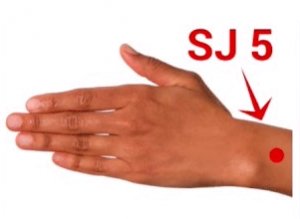
You should start by pressing this point for 30 seconds. After you have finished with SJ 5 acupressure, start with GB 34 located below the knee, just below and in front of the head of the fibula. You should press this point for 30 seconds on each side.
Eyebrow twitching superstition?
Many people believe in superstitions that the right eyebrow twitching means something good is about to happen, while the left eyebrow twitching means bad luck.
As described above, medicine provides us with very good reasons why our eyebrow muscles twitch.
Sources:
- https://insights.ovid.com/article/00002341-200111000-00004
- https://www.ncbi.nlm.nih.gov/books/NBK534763/
- https://www.ncbi.nlm.nih.gov/pmc/articles/PMC5481821/
- https://www.ncbi.nlm.nih.gov/pmc/articles/PMC3633239/
- https://www.ncbi.nlm.nih.gov/pubmed/8572103
- https://www.ncbi.nlm.nih.gov/pmc/articles/PMC5623781/
- https://www.ncbi.nlm.nih.gov/pmc/articles/PMC5513921/
- https://www.healthline.com/health/eyebrow-twitching
- https://eyewiki.aao.org/Blepharospasm
- https://www.ncbi.nlm.nih.gov/pubmed/17679106
- https://www.ncbi.nlm.nih.gov/pmc/articles/PMC3711704/
- https://www.webmd.com/eye-health/why-your-eyes-twitch#1
- https://www.nhs.uk/conditions/twitching-eyes-and-muscles/ https://www.mayoclinic.org/symptoms/eye-twitching/basics/definition/sym-20050838
- https://www.ncbi.nlm.nih.gov/pubmed/26984806 https://www.ncbi.nlm.nih.gov/pubmed/7723960
- https://www.ncbi.nlm.nih.gov/pubmed/10025045
- https://albanacupuncture.com/blog/acupuncture-stop-eye-twitching/

